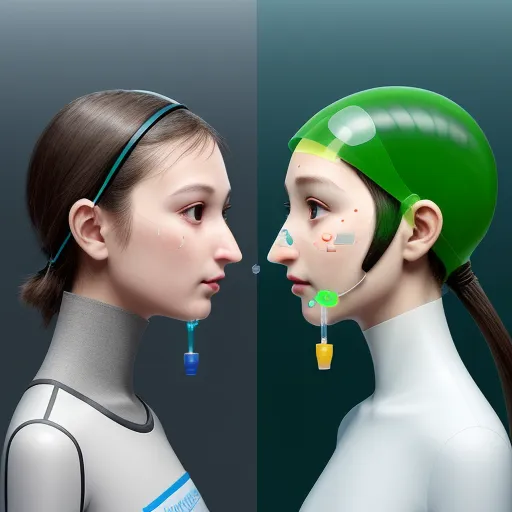
convert to hd: electronic nose versus human nose for smelling plastic, food plastic, it should include plastic items and traces of smell from

Kunsten zijn alleen beschikbaar voor jou in je persoonlijke rekening.
Privégeneratie, alle verzoeken zijn toegestaan
Kunsten zijn alleen beschikbaar voor jou in je persoonlijke rekening.
AI Writing Assistant: a woman with a green helmet and
In this experiment, scientists wanted to test how well artificial intelligence could replicate the sense of smell compared to humans. They used two different methods - one using an electronic nose and another using human noses. The researchers placed both types of noses at a slight distance apart so they wouldn't interfere with each other.
The electronic nose consisted of several sensors that were able to detect various chemical compounds present in the air. These signals were then analyzed by a computer program which identified patterns based on these data points. On the other hand, the human noses had to rely solely on their natural ability to pick up scents without any additional technology involved.
To begin the experiment, the participants were given a variety of objects made out of plastics such as water bottles, cups, and containers. Each object had been exposed to varying levels of plastic fumes over time, making them ideal candidates for testing the effectiveness of both devices. As expected, the results showed that while the electronic nose did perform better than the human nose when identifying specific odorants like acetone (found in nail polish remover), benzene (present in gasoline) and ethylbenzene (used in rubber manufacturing), there were still some limitations.
For example, it struggled to identify more complex mixtures like those found in perfume or cologne. Overall though, this study highlights the potential benefits of incorporating AI into our daily lives especially when dealing with tasks where accuracy matters most like medical diagnosis or environmental monitoring systems.

Maak met gemak verbluffende digitale kunst met de AI-afbeeldingstool van onze website.

Verander uw afbeeldingen in verbluffende digitale kunst met behulp van het AI-beeldveranderingsprogramma van onze website.

Verbeter uw beelden met ongelooflijke details en scherpte met behulp van onze AI-afbeelding upscale tool.